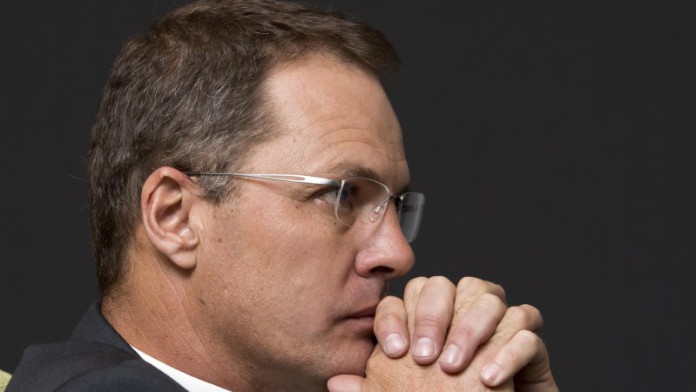
DRDGOLD estimated the development of the West Rand Tailings Retreatment Project (WRTRP) would require R2bn in capital – a sum it could finance using cash and debt.
The R2.2bn firm which extracts remnant gold from surface dumps of previously mined ore, is to mine Sibanye-Stillwater’s WRTRP following an agreement between the two to form a partnership. In return for vending in some of its surface resources and infrastructure, Sibanye-Stillwater will take a 38% stake in DRDGold with a 24 month option to increase this investment to 50.1%.
Niël Pretorius, CEO of DRDGold, told analysts and media today during a presentation setting out the partnership that it would take R200m to “… get the facility up and going”. Subsequent mining of the surface gold – estimated to yield some 43 tonnes of gold over a 15 to 20-year period – would cost R2bn, largely spent on tailings facility, said Pretorius.
Responding to an analyst question, Pretorius said it was unlikely the firm would have to tap shareholders for funds. “We have spent R1.3bn over last few years without having to go to the market. I am confident that given the project and the current price levels, we will comfortably support the capital required,” he said.
According to Johann Steyn, an analyst at Citi, capital expenditure may be as much as R4.2bn to fully develop WRTRP, however. Whilst he said there was little to dislike in agreement between Sibanye-Stillwater and DRDGold, there were still risks.
“The main risk, in our view, is if DRD is unable to fully fund the capital commitments for the WRTRP from internal funds and debt, in which case shareholders, including Sibanye-Stillwater, may be approached for additional funding. Reinvesting liquid capital back into South Africa may be a negative for most investors,” he said.
As of its year-end which closed on June 30, DRDGold’s net cash position decreased by R98m to R254m. It reported a 5% reduction in yield and production of 137,000 ounces which was 4% lower year-on-year.
The market generally liked the deal based on share price performance. Shares in DRDGold were up 2% in early morning trade in Johannesburg while Sibanye-Stillwater was 3% higher.
From a DRDGold perspective, gaining access to Sibanye-Stillwater’s WRTRP assets, which are the slimes at the Driefontein and Kloof gold mines near Carletonville west of Johannesburg, addresses concerns the market had about the quality and life of its existing resources.
The main concern is that in deciding to generate replacement resources organically, the company has adopted complex, more expensive technology on an all-in sustaining cost (AISC) basis than its peers. Its yield is also lower than its peers – a function of its limited growth options.
Pretorius acknowledged the company had struggled to grow. “We have had many doors closed in our face because people perceive us to be a small company,” he said. “We are very grateful that Sibanye did not do this.”
SHAREHOLDER VOTE
Despite the merits of the transaction, its success does depend on DRDGold shareholders waiving a mandatory offer by Sibanye-Stillwater for their shares. According to South African law, a company must make an offer to minority shareholders if it builds 35% or more in a certain company. DRDGold is issuing new shares to Sibanye-Stillwater.
Asked if the transaction would proceed without the waiver, Neal Froneman, Sibanye-Stillwater CEO, said: “It is not intended to make a follow on offer to minorities. That is not going to happen”. The transaction would not proceed without the waiver, he said.
Asked about the option to proceed to outright control of DRDGold, Froneman said: “We have got two years to do a follow on acquisition. It is something we will watch. At the moment, we are very mindful of our leveraged position, but in two years time we could look differently at it”. Sibanye-Stillwater had net debt of $1.69bn (R23.5bn) as of June 30. This equates to net debt to earnings before interest, taxes, depreciation and amortisation of 2.6:1 – a level described by the group earlier this year as “temporarily elevated”. It represented a more than 300% increase in net debt year-on-year.








